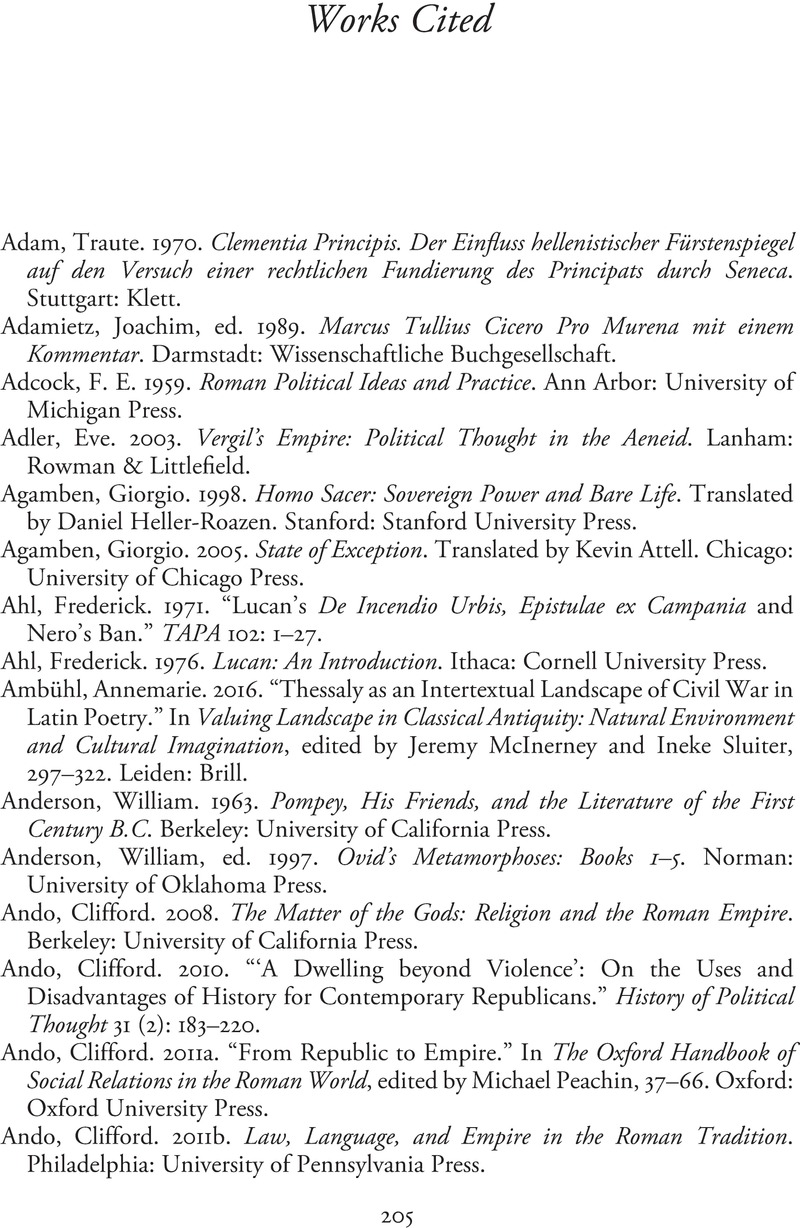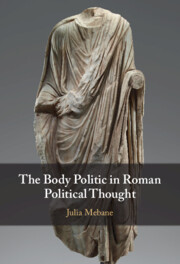Book contents
- The Body Politic in Roman Political Thought
- The Body Politic in Roman Political Thought
- Copyright page
- Dedication
- Contents
- Acknowledgments
- Introduction
- Chapter 1 The Divided Body Politic
- Chapter 2 The Sick Body Politic
- Chapter 3 The Augustan Transformation
- Chapter 4 Julio-Claudian Consensus and Civil War
- Chapter 5 Addressing Autocracy under Nero
- Conclusion
- Works Cited
- Index Locorum
- Index
- References
Works Cited
Published online by Cambridge University Press: 01 February 2024
- The Body Politic in Roman Political Thought
- The Body Politic in Roman Political Thought
- Copyright page
- Dedication
- Contents
- Acknowledgments
- Introduction
- Chapter 1 The Divided Body Politic
- Chapter 2 The Sick Body Politic
- Chapter 3 The Augustan Transformation
- Chapter 4 Julio-Claudian Consensus and Civil War
- Chapter 5 Addressing Autocracy under Nero
- Conclusion
- Works Cited
- Index Locorum
- Index
- References
Summary

- Type
- Chapter
- Information
- The Body Politic in Roman Political Thought , pp. 205 - 245Publisher: Cambridge University PressPrint publication year: 2024



